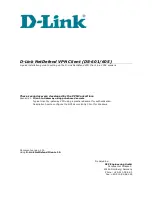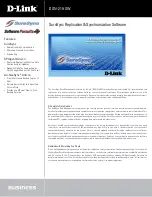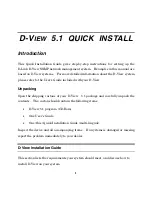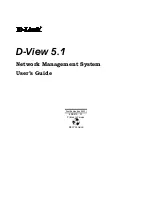
Displaying EPICenter Groups and Resources
EPICenter Reference Guide
227
function. The exception is the three predefined groups, Hosts, Users, and Port Groups, which are
considered Manual resources but cannot be destroyed. If the user-defined resource is a group,
you can add and remove children as desired.
■
Imported resources are assigned a source name as part of the Import process. See “
Importing
Resources
,”
on page 242
for more information.
User-defined (Manual) resources can be deleted using the Destroy function. System-defined
(EPICenter) and imported resources cannot be deleted, although they
can
be removed as children of
other groups to which you have added them. See “
Deleting Resources—The Destroy Function
,”
on
page 229
for more information on deleting resources, and “
Removing A Child Resource from a
Group
,”
on page 232
for more information on removing resources from groups.
●
Unique Name
—A name that uniquely defines this resource within the Source scope. For user-
defined resources (Source is Manual) this is always blank.
■
For pre-defined resources, the Unique Name is the same as the Resource Name.
■
For device resources, the Unique Name is the device IP address.
■
For port resources, the Unique Name is the IP address of the device followed by the port number.
For ports on a chassis device, the port number combines the slot number and the port number.
■
For resources imported from a file or LDAP directory, the Unique Name is specified in the input
process, and may be different from the Resource Name.
Below these fields there are two tabbed pages whose contents depends on the type of resource being
displayed.
●
For Groups, you can view a list of
Children
of the group. This lists the resources (individual
resources or subordinate groups) associated with the selected group. For each child, the list includes
the resource name, its type, and its source.
●
For User, Port, and Host resources, you can view a list of
Relationships
for the resource. This
displays a list of other resources related to the selected resource.
●
For all types, you can view a list of the
Attributes
associated with the resource. The exception is the
top level (root) node, “Groups,” which has no attributes.
Resource Filtering
The field at the top of the Component Tree provides a drop-down menu from which you can select a
filter to apply to the Component Tree display. This filter controls the types of resources that are
displayed as subcomponents of the groups in the tree. This feature is useful when you have a large
number of resources of various types, and lets you limit the display to resources of a specific type in
which you are interested.
Groups are always displayed. The following filter choices determine the types of individual resources
that are displayed within the groups:
●
All
allows resource children of all types to be displayed.
●
Devices
shows only the Device resources within the groups.
●
Hosts
shows only Host resources within the groups.
●
Ports
shows only Device and Port resources within the groups.
●
Users
shows only User resources within the groups.
●
VLANs
shows only VLAN resources within the groups.
Содержание EPICenter 6.0
Страница 14: ...EPICenter Reference Guide 14 ...
Страница 18: ...Preface EPICenter Reference Guide 18 ...
Страница 19: ...1 EPICenter Basic Features ...
Страница 20: ......
Страница 24: ...EPICenter Overview EPICenter Reference Guide 24 ...
Страница 44: ...Getting Started with EPICenter EPICenter Reference Guide 44 ...
Страница 100: ...The Inventory Manager EPICenter Reference Guide 100 ...
Страница 140: ...The EPICenter Alarm System EPICenter Reference Guide 140 ...
Страница 172: ...Configuration Manager EPICenter Reference Guide 172 ...
Страница 196: ...The Firmware Manager EPICenter Reference Guide 196 ...
Страница 220: ...The Interactive Telnet Feature EPICenter Reference Guide 220 ...
Страница 250: ...The Grouping Manager EPICenter Reference Guide 250 ...
Страница 276: ...Real Time Statistics EPICenter Reference Guide 276 ...
Страница 295: ...The New Menu EPICenter Reference Guide 295 Figure 137 Example of a default layout for a 500 node map ...
Страница 342: ...Using the VLAN Manager EPICenter Reference Guide 342 ...
Страница 348: ...The ESRP Monitor EPICenter Reference Guide 348 ...
Страница 446: ...EPICenter Reports EPICenter Reference Guide 446 ...
Страница 447: ...2 Advanced Upgrade Features ...
Страница 448: ......
Страница 480: ...EAPS Protocol Monitoring and Verification EPICenter Reference Guide 480 ...
Страница 508: ...Using the Policy Manager EPICenter Reference Guide 508 ...
Страница 525: ...3 Appendices ...
Страница 526: ......
Страница 542: ...EPICenter Backup EPICenter Reference Guide 542 ...
Страница 564: ...Voice over IP Manager EPICenter Reference Guide 564 ...
Страница 580: ...EPICenter Reference Guide 580 ...
















































